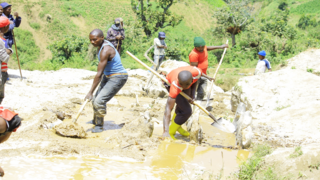ITSCI has issued its 2020/2021 Incident Review. The report provides an overview of our achievements working with stakeholders in risk mitigation relating to mineral supply chains from Burundi, Democratic Republic of Congo (DRC), Rwanda and Uganda from 1 November 2020 to 31 October 2021.
The ITSCI Programme has extensive experience supporting companies, governments and civil society in the identification and mitigation of risks associated with 3T minerals supply chains. Our standards are independently confirmed to be 100% aligned with the OECD Due Diligence Guidance for Responsible Supply Chains of Minerals from Conflict-Affected and High-Risk Areas (OECD Guidance), and we support companies performing due diligence according to those expectations.
Our field teams complement traceability with an incident management system to identify and verify risks, as a critical aspect of due diligence. Whistleblowing is a critical component of the incident reporting framework. We communicate resultant incidents along the supply chain, recommend mitigation actions, and facilitate the discussion of mitigation among local stakeholders. In addition, we follow up and report on the progress of mitigation.
Salient indicators of ITSCI Programme implementation from 1 November 2020 to 31 October 2021 follow.
- 2,499 monitored mine sites
- 796 average on the ground visits per month
- 553,831 mineral transactions
- 989 whistle-blower calls
- 1,300 incidents opened
Of the 1,300 incidents opened during the reporting period, 97 were categorised as Level 1 seriousness with potential association with human rights abuses, the involvement of non-state armed groups, illegal taxation, or involvement in mineral business by rogue individuals of state armed groups.
Of the 97 Level 1 incidents, 12 were categorised as High Risk with relevance for U.S. Securities and Exchange Commission reporting. A further four Level 2 incidents have been categorised as High Risk for this reporting period. To date all remain under mitigation and monitoring.
Of the 97 Level 1 incidents, 12 were categorised as High Risk with relevance for U.S. Securities and Exchange Commission reporting. A further four Level 2 incidents have been categorised as High Risk for this reporting period.
ITSCI has 32 indicators of outcomes from incident management which for the purpose of simplification are aggregated into 7 categories. The proportion of outcomes for the 7 incident categories during the current reporting period follow.
- 42% Due Diligence Improvements
- 16% Governance and Security Improvements
- 1% Mine/Company/Mineral Suspension or Seizure
- 19% Awareness-Raising and Mediation
- 4% Human Rights/Health and Safety Risk Mitigation
Overall, the outcomes of incident management are similar to the previous reporting period.

